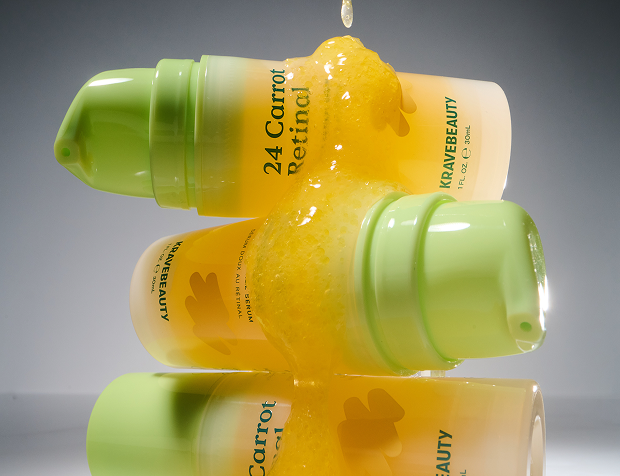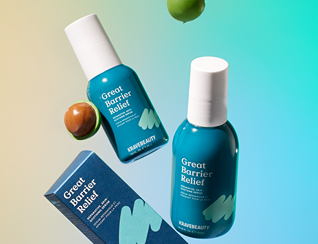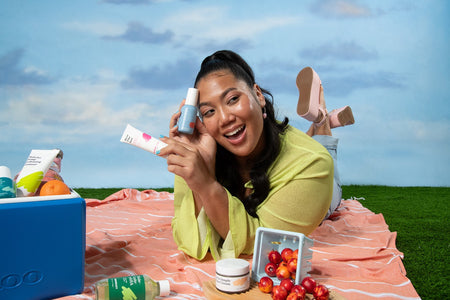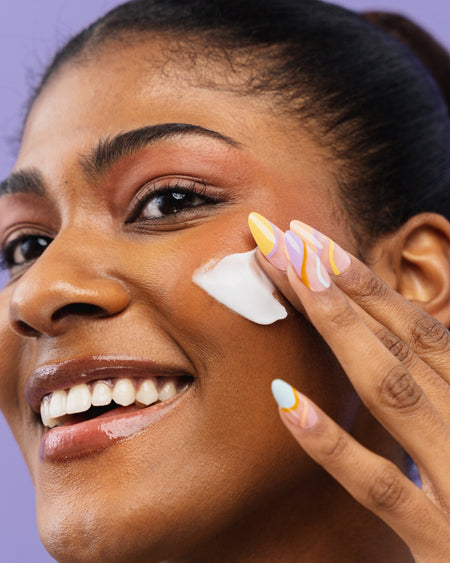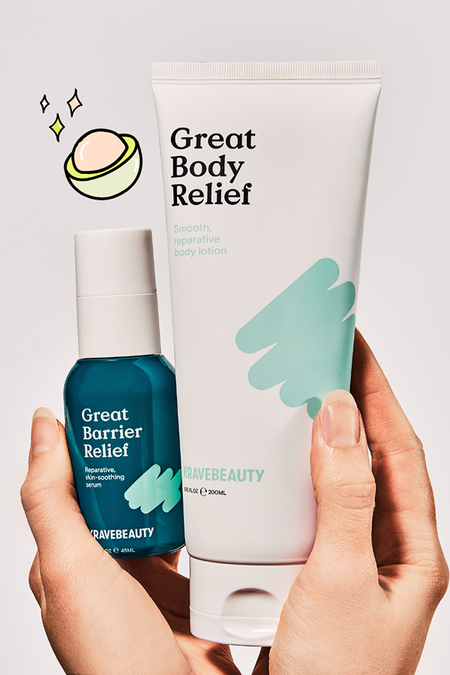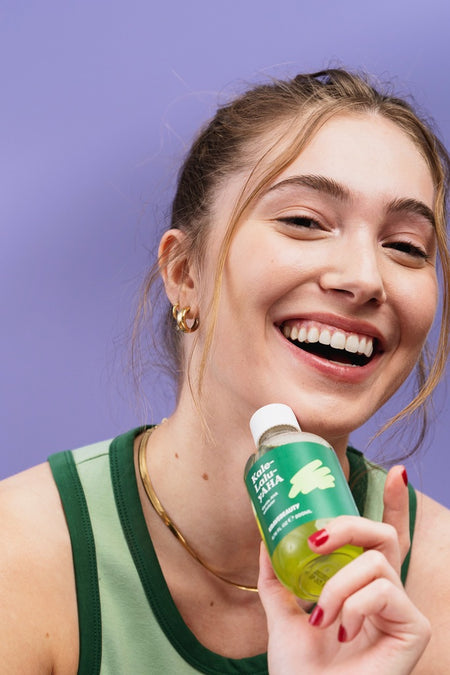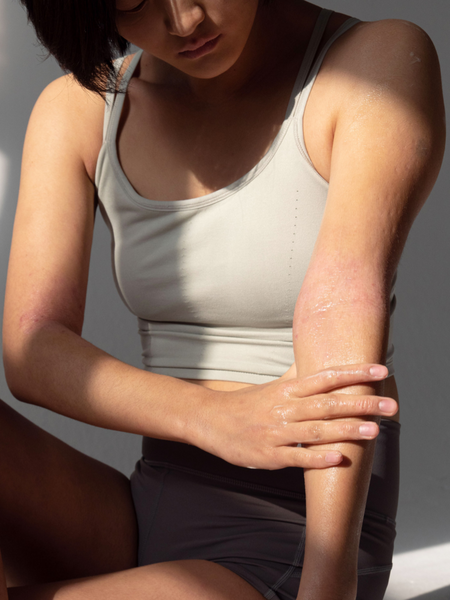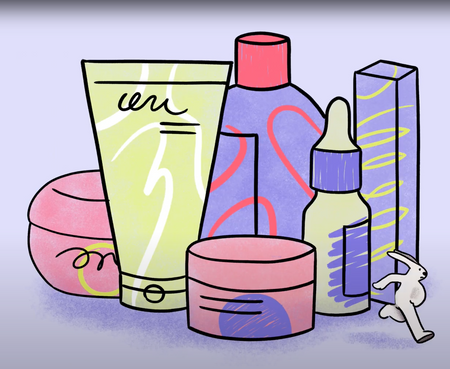How to Manage Summer Breakouts

THE HEAT IS REAL. And so are our skin struggles.
“My skin seems to break out more in summer!”
“My skin feels so dirty and congested in this heat!”
“My skin is as dehydrated as the Sahara in this weather!”
These are all very valid skin concerns that arise during this time of the year, especially with the many heat waves that have been taking over cities all around the world. The culprit of all of these issues? Overheated skin.
Overheated skin is something that needs to be taken care of first before you start slathering on another spot treatment.
HEAT = The match of a fire
In the summer, the water in your skin will naturally evaporate more quickly. Your skin then produces more oil as a protective layer to stop the water from escaping. Your pores will also naturally expand with heat, meaning some of the extra sebum will get trapped inside and give an appearance of overstretched/clogged pores.
Sweating is your body’s natural way of regulating heat because the evaporation of water on your skin helps cool it down (evaporative cooling). However, as the water from your sweat evaporates, the chemicals and salts in your sweat remain on your skin which can then become irritating. And because of the increased moisture on top of your skin, dust and pollution can easily stick to your skin increasing your chances of clogged pores. That doesn’t sound pretty, does it..?
So how do you treat heated skin?
1) Cool it off
The first thing you need to do is cool your body. You can easily do so by applying a cool towel to the back of your neck or your forearms, these points have been shown to play a big role in your regulating your body’s heat.
Next, you can also apply something cooling on your face. It is pretty popular nowadays to keep your facemasks or aloe vera gel in the fridge. And while this can certainly help, make sure your fridge isn’t too cold or near freezing.
Another side note, DO NOT USE ICE CUBES DIRECTLY ON YOUR FACE! We’ve noticed that this has become a popular trend, but the ice from your freezer is typically several degrees colder than freezing. Applying it directly on your face can cause an ice burn or damage on your skin. If you want to use ice, make sure to wrap it in a clean towel. Similarly, if you enjoy massaging your skin with cold spoons or a cold jade roller, keep them in the fridge rather than the freezer!
2) Feed your skin what it craves aka MORE HYDRATION
It is crucial to maintain hydration levels in the summer to avoid heat-related breakouts. Make sure you’re drinking tons of water to replace the water you’re losing by sweating and breathing out.
A simple saline mask is a cheap and easy way to rehydrate your skin! SAY WHAT?!
Yup! Normal saline solution (a sodium chloride concentration of 0.9%) mimics the fluid that floats inside your body, making it less likely for your skin to resist it if you apply it topically. Contrary to popular belief, your skin does not drink up all the layers of toner you’re applying, most of them just hydrate on the surface level of the skin temporarily and evaporates. Adios, toner...
If you use normal saline solution as a face mask, your skin will be more susceptible to receiving the hydration you feed it.
But before you go out to the drugstore, here are some things you want to look for:
- Make sure it’s a ‘Normal’ saline solution with a sodium chloride concentration of 0.9%. Any higher concentration will start to dehydrate your skin.
- Make sure it doesn’t have added preservatives or ingredients such as those for washing/containing contact lenses.
After applying the saline soaked cotton pads on your skin for 10 minutes, gently rinse off the solution so that the salt does not remain on your skin, this is a super important step because if you don’t, it can irritate and dry out your skin.
We should also be taking advantage of the humidity by adding some water-grabbers, aka, humectants! Applying hyaluronic acid or glycerin to your skin will help it catch some of the moisture from the environment. If you do not live in a humid area, you can try using humectants during or right after you shower, and seal it in with your favorite moisturizer.
3) Eat antioxidants and apply antioxidants.
Have you ever heard of your sebum oxidizing? It happens a lot but surprisingly doesn’t get talked about very often.
In a previous post we mentioned that lipids (oil) on your face can get oxidized by environmental light, heat, UV rays, and pollutants in a process called lipid peroxidation. They also come with some consequences:
- It creates the perfect environment for bacteria P. acnes to thrive.
- It signals your skin to create an inflammatory response which can show up as redness and irritation.
- Some lipids in your sebum, such as squalene, can become comedogenic once oxidized and end up clogging your pores.
You can prevent this by feeding your skin plenty of antioxidants. Vitamin C and E work together to enhance their antioxidative benefits than when either one is used alone. Matcha Hemp Hydrating Cleanser and Kale-Lalu-yAHA are chock-full of superfood antioxidants.
Mung bean or green tea masks are great too, because of their high antioxidant and anti-inflammatory properties. Simply mix mung bean powder with some water to create a paste and apply it to your face. Matcha mixed with water can be soaked onto cotton pads and applied to the skin as well, you can even keep it in the fridge beforehand!
Drinking green tea is also known to decrease UVB-caused oxidative damage as well as decrease the expression of collagen-breaking MMPs. Grab a matcha and load up on blueberries, walnuts, red bean, and more!
4) Don’t overwash your face
Lastly, you might be tempted to wash your face more frequently since you’re noticing more sweat, sebum, or clogged pores in the summer, but remember that the best way to maintain your skin’s hydration is to keep its natural moisture barrier intact! Overwashing can disrupt this barrier and cause more trans-epidermal water loss (TEWL).
Stay tuned for next week’s post for the low-down on TEWL and what you can do to minimize it!
